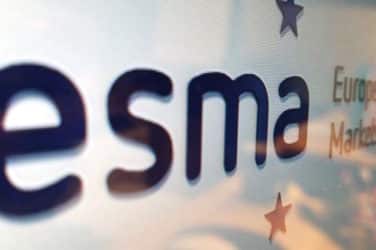
As the deadline of March 2013 nears to introduce the legal entity identifier (LEI) initiative— a process to attach a barcode to all financial trades, so as to help watchdogs across the globe better monitor systemic risk—a concerted regulatory push is being undertaken so that the project does not fall by the wayside.
The Financial Stability Board, the G20’s regulatory body, has been at the forefront of driving the initiative on, with its previously announced deadline of March 2013, but the timetable is becoming very tight to meet this date with big issues, such as who the LEI issuers will be, still to be ironed out.
At present, there is no standard, globally consistent identifier for market participants, over-the-counter derivatives products or individual trades and a lack of any standardization caused a major problem in the aftermath of the collapse of U.S. investment bank Lehman Brothers—a big derivatives user—in September 2008 as many financial institutions struggled to work out their counterparty risks to the bankrupted firm.
An LEI, a 20-digit numeric or alphanumeric code, would identify a firm by its name, address and jurisdiction but would not contain any embedded intelligence.
Previous industry attempts to introduce a global standard have failed in the past, due to competing industry interests, but now regulators are stepping in to speed the standardization process up, which many in the industry back. But major challenges still remain as the industry and individual firms tackle the complexity of implementing an LEI, consider control mechanisms to maintain its integrity and find the budget to fund costly systems changes involved in introducing a global LEI.
“I would say that there is a real difference with this particular standard,” Darren Marsh, business manager, risk and compliance services at Interactive Data, a provider of financial market data, told Markets Media.
“For organizations, there is some additional work for them and additional costs attached to it, but by the same token they can actually see that there will be some tangible benefits to their organizations and the industry as a whole going forward.
“The LEI is based around the unique and persistent identification of entity and really how that roles into risk management and allows organizations to be able to understand risk exposure on an ongoing basis. Now, obviously, the LEI is just a code, and you still need the underlying reference data and the linkage information that supports the standard to be able to make those calls. And to be able to accurately aggregate risk up to a particular counterparty or particular organization.
“But this is very much the first step on quite a long journey to be able to do that. Certainly, there is real recognition in the industry that this is the first step needed to be implemented to do this. As a result, I do think there is very wide acceptance for it.”
The European Securities and Markets Authority (Esma), the pan-European regulator, has joined fellow watchdogs such as the Hong Kong Monetary Authority, the Canadian Securities Administrators and Australia Securities and Investments Commission in backing the introduction of the LEI initiative.
In the recently published technical standards by Esma over the European Market Infrastructure Regulation (Emir), regarding the improved regulation of OTC derivatives markets in the region, the watchdog set out its LEI plans.
“Esma will ensure that if a global entity identifier is in place and is endorsed in the European Union, it shall be used,” said Esma in its September 27 document. “Whilst some respondents were in favor of an interim LEI solution, others felt that this could incur more costs for market participants if they have to adjust their systems to different codes twice—an interim LEI and then the final LEI. Esma finds that any interim solution that is adopted for European entities subject to the reporting obligation, needs to be in line with the technical specifications agreed by the FSB.”
The International Organization for Standardization (ISO), the international standard-setting body, has established a draft standard, called ISO 17442, for the LEI and it is planned to be operated as an at-cost utility by the U.S. Depository Trust & Clearing Corp, the post-trade financial services group, and Swift, or the Society for Worldwide Interbank Financial Telecommunication, a society that operates a messaging service for financial messages, whose headquarters are in Brussels, Belgium.
In parallel to this, the Commodity Futures Trading Commission (CFTC), a U.S. regulator, has instigated a provisional LEI, called the CFTC’s Interim Compliant Identifiers, or CICI, which is designed to be an identifier for all legal entities dealing in OTC derivatives falling under CFTC jurisdiction and which the CFTC hopes will morph seamlessly into a future global LEI system. The move by the CFTC to create the CICI was brought about because the U.S. Dodd-Frank Act, which is similar in scope to Emir, had mandated initiatives to create standard LEIs.
“CICI is based on the same ISO 17442 standard,” said Marsh at Interactive Data. “What we are seeing at the moment is various different regulators mandating the use of the LEI or a provisional LEI.
“The CICI is very much on the proviso that all of the existing codes—systems, IP and all the rest of it—get handed over to the LEI, or whichever LEI utility when it is chosen. So in theory we already have a pre-cursor to this and a potential model, and I do think that the individual regulators that are looking for, or are in the consultation process, will look very closely and scrutinize that particular model to see if that is the model to take into their own requirements going forward. And then that will just be how it comes together with the LEI utility that is chosen.”
Traditionally seen as a mundane back-office process, the onset of the global financial crisis saw firms want to better identify ways to understand and track the underlying legal entities for each counterparty in a bid to bolster their risk management processes.
“I do think as a result of all of this activity we are seeing real momentum on the LEI,” said Marsh. “And I think that was always expected in some ways. It almost needs the first step and the interesting thing is that now there is an actual model, a tangible thing out there that is creating these codes, I think this focuses the industry a lot more. It is not just talk, there is something that actually exists and will be used in regulatory reporting in anger very soon.”




